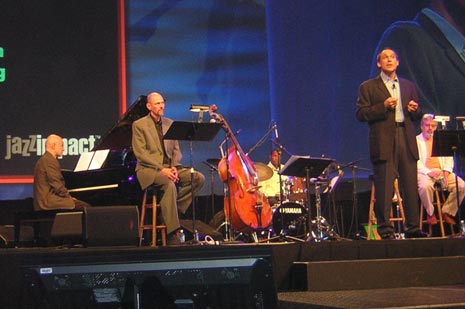People seek meaning in their existence. Meaning comes through connection, either with an idea or with another person. There is a space, a distance, between our “self” and the “other” where connection takes place. What measures the depth of that connection is the degree to which each individual feels they have been “heard” or understood. The collaborative act of communication takes place in this space.
The social technologies of the web are creating spaces that resemble the dynamic playgrounds in which the arts take place and most specifically the art of jazz.
I’ve used jazz as a catalyst for organizational change in a lot of different contexts over the past decade. Those who have chosen my program often do so for celebratory purposes. But the most effective application I’ve experienced has been with people who are facing challenges that they are struggling to define — terrain that is uncertain and difficult to navigate.
As an arts-based intervention, Jazz has the capacity to bring people into that space of deep uncertainty and to give them techniques to hold themselves open to the emergence of unexpected solutions. I have seen this process help people recognize that the biggest barriers they face are created by assuming that uncertainty and unpredictability must be vanquished. This has always been our tendency when trying to guide technology.
The social communications technology that defines our world reflects the infinite qualities of the human imagination in all its complexity and contradiction. This is what makes human consciousness “human.”
In the 1960’s Marshall McLuhan called the arts a DEW Line — a distant early warning system that can always be relied on to tell the old culture what is beginning to happen to it. Jazz is the DEW line of the Information Age. The dynamics of jazz can inform a new philosophy of management needed to insure the peaceful and generative guidance of the technium we are becoming.

onlinecasinogames.rocks
Jazz and the Technology of Today – Guest Post by Michael Gold